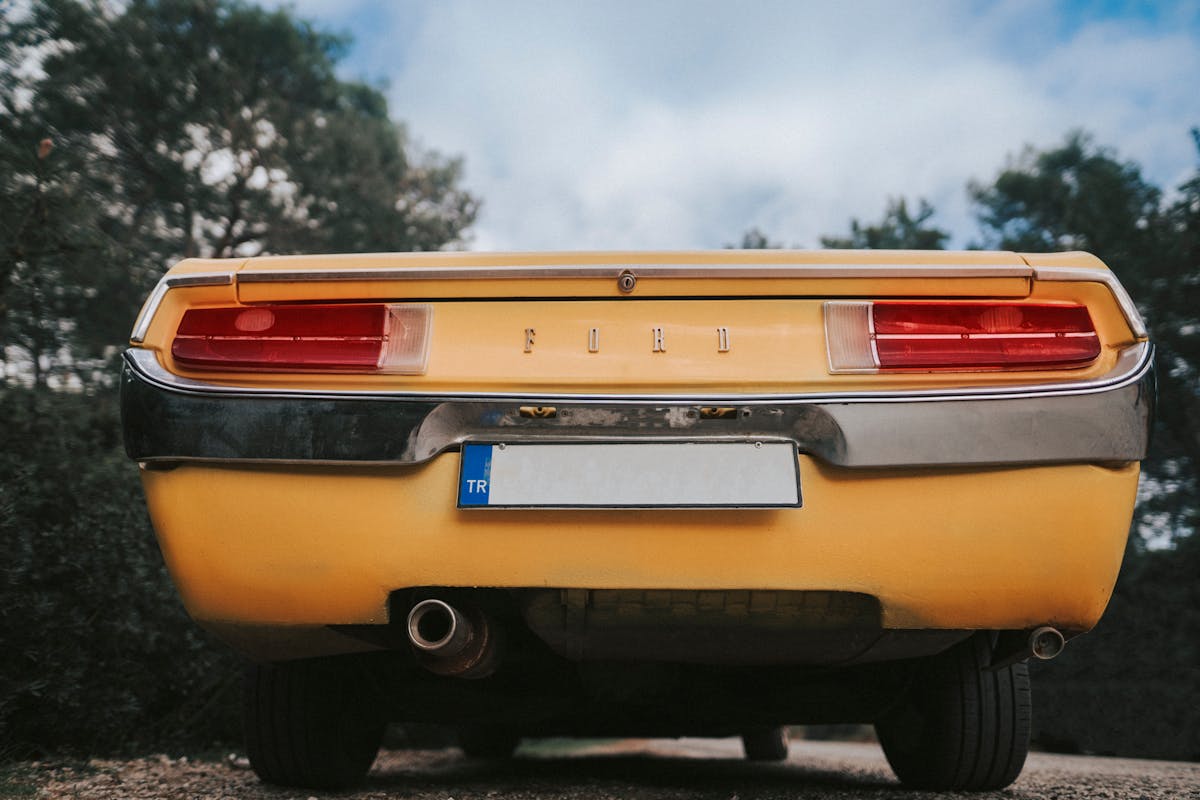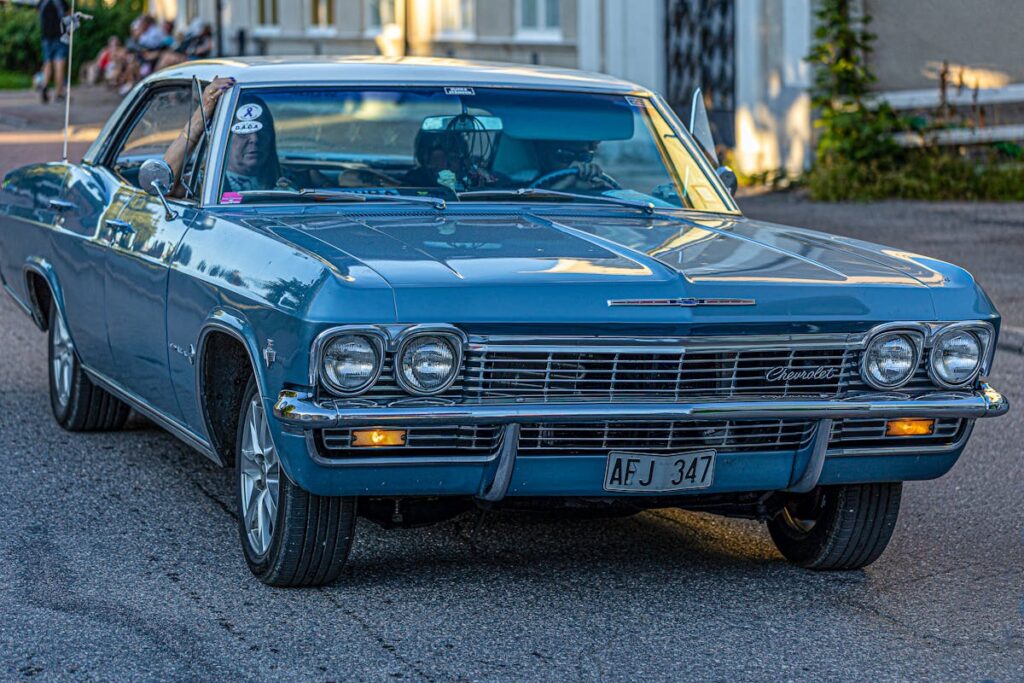The names of car brands, often taken for granted, present a fascinating study into the history, values, and aspirations of their respective companies. With each name, there is a story waiting to be revealed, be it the elegance and speed encapsulated in ‘Ferrari’, or the luxury and engineering prowess signified by ‘Mercedes-Benz’. These names serve not merely as identifiers but as promises of quality, performance, and a unique driving experience. In this light, it becomes intriguing to explore the narratives behind these names, what they represent, and how they’ve influenced our perception of these automotive giants.
The History of Mercedes-Benz
Since its inception over a century ago, Mercedes-Benz has firmly established itself as a leader in the automotive industry. The Mercedes legacy is a rich tapestry of innovation, resilience, and a relentless pursuit of perfection. It is a story of the luxury evolution embodied in every vehicle bearing the Mercedes emblem.
Founded by Karl Benz and Gottlieb Daimler, Mercedes-Benz’s roots can be traced back to the invention of the first gasoline-powered automobile. The Mercedes 35 HP, launched in 1901, revolutionized the industry with its lightweight design and high-speed capabilities. This model set the precedent for what would become the brand’s enduring commitment to cutting-edge technology and design sophistication.
Over the years, Mercedes-Benz has consistently pushed the boundaries of automotive engineering. Its commitment to safety, performance, and luxury is evidenced in models such as the S-Class and E-Class sedans, renowned for their elegance, superior comfort, and advanced safety features. Today, as we explore the era of electric mobility, Mercedes-Benz continues to lead, exemplifying its luxury evolution with the EQ series.
This brief historical overview underscores Mercedes-Benz’s legacy as a forerunner in the automotive industry, always driving towards the future.
Behind the Name: Ferrari
Synonymous with speed, luxury, and unrivaled craftsmanship, the name Ferrari has long been a symbol of prestige in the world of automotive engineering. This emblematic brand was initiated by Enzo Ferrari in 1939 out of Alfa Romeo’s racing division and has since become a standalone entity representing the pinnacle of car performance and design.
The Ferrari logo, a prancing horse on a yellow shield, encapsulates the brand’s power and elegance. The emblem, originally a tribute to World War I Italian fighter ace Francesco Baracca, has evolved into a symbol of Italy’s automotive superiority.
Ferrari racing has a storied history in the world of motorsport. The brand has won an unprecedented 16 Constructors’ Championships and 15 Drivers’ Championships in Formula 1, reaffirming Ferrari’s dominance in the industry.
However, Ferrari isn’t just about racing. The company has managed to transfer its racing pedigree into road cars, creating a seamless blend of performance and luxury. It’s this unique DNA that sets Ferrari apart, demonstrating that the brand is not just a name, but a legacy that continues to redefine the boundaries of automotive excellence.
Origin of the Toyota Brand
Tracing the lineage of the Toyota brand takes us back to Japan in the late 1920s. The Toyota origins spring from a company initially known for loom manufacturing, Toyoda Automatic Loom Works. The brand evolution commenced when the founder’s son, Kiichiro Toyoda, ventured into automobile production, inspired by an overseas visit to American manufacturing plants.
Kiichiro Toyoda introduced the idea of “Just-In-Time” manufacturing, a concept still utilized today, which revolutionized the auto industry and contributed notably to the Toyota brand’s global reputation. Toyota’s first car, the Model AA, was introduced in 1936. The next notable milestone was the launch of the Toyota Land Cruiser in 1951, which opened doors for the brand’s international expansion.
However, it wasn’t until 1982 that the company officially changed its name to Toyota Motor Corporation. The decision was influenced by the desire for a distinct and globally recognizable identity. The name ‘Toyota’ was believed to sound better and have a more harmonious resonance. This change marked a pivotal moment in the brand evolution of Toyota, emphasizing its commitment to quality, innovation, and global reach.
The Ford Name: An American Icon
Shifting from Japanese automaker Toyota, we now turn our attention toward the iconic American brand, Ford. From a historical perspective, Ford has consistently demonstrated its significance through a series of pivotal automotive innovations. In the subsequent discussion, we will analyze the evolution of the Ford name and the groundbreaking contributions it has made to the automobile industry.
Ford’s Historical Significance
Emerging from humble beginnings, the Ford name has woven itself into the very fabric of American history. The Ford legacy is more than just a corporate chronicle; it’s an integral part of the nation’s industrial and cultural narrative. Indeed, the Ford Motor Company has made considerable contributions across various aspects of American life.
Three key areas underscore the historical significance of Ford:
- Economic Impact: Ford’s mass production techniques revolutionized the American industry. The company’s high wages policy, known as the “$5-a-day” plan, considerably improved the standard of living for its employees and set a precedent for fair labor practices.
- Cultural Influence: Ford vehicles, particularly the Model T, had a profound effect on American society. It democratized mobility, transformed daily life, and shaped the landscape with the growth of suburbs and the modern highway system.
- Global Reach: Ford’s innovations and manufacturing methods were not restricted to America. They were adopted and adapted worldwide, making Ford a symbol of American industrial prowess.
Analyzing the Ford legacy, it becomes clear that the brand’s historical significance extends beyond the automotive industry, ingraining itself into the broader social and economic contexts.
Pioneering Automotive Innovations
While the Ford Motor Company’s historical significance is indisputable, it is equally remarkable to contemplate the brand’s pioneering automotive innovations. The name Ford is synonymous with the electric revolution, leading the charge in developing efficient, environmentally friendly vehicles. The brand’s commitment to sustainable materials reflects a forward-thinking approach, integrating recycled and renewable resources into their vehicle production process.
Performance enhancements are another area where Ford has excelled, with advancements in engine technology resulting in more powerful, fuel-efficient cars. The brand’s design evolution has also been notable, keeping pace with changing consumer preferences while preserving its distinctive aesthetic.
Autonomous driving is another frontier where Ford is making strides, aligning with the broader industry trend towards connected vehicles. Innovations in safety have been a constant, with the brand introducing features like blind-spot detection and adaptive cruise control early on.

Aston Martin: Unveiling the Name
In the domain of luxury automobiles, the name Aston Martin stands as a beacon of elegance and performance. The Aston Martin legacy is a tale of ingenuity, innovation and unyielding pursuit of perfection. Its name is not only associated with high-end vehicles, but also with a rich history that spans over a century.
The Aston Martin design is globally recognized and revered for its meticulous attention to detail, enchanting aesthetic appeal, and superior engineering. This British automotive manufacturer has consistently delivered vehicles that combine style, luxury, and performance, making its name synonymous with top-tier quality and exclusivity.
To understand the brand’s name better, let’s examine three aspects:
- Origins of the Name: Named after its co-founder, Lionel Martin, and the Aston Hillclimb where he first raced.
- Symbolism: The iconic wings logo symbolizes speed, aspiration, and freedom, reflecting the brand’s ethos.
- Global Influence: Aston Martin’s name is globally recognized and associated with luxury, performance, and the iconic James Bond franchise.
The BMW Story
Over the course of a century, the BMW brand has etched an indelible mark in the annals of automobile manufacturing. Its story is one of resilience, innovation, and an unwavering commitment to quality. The BMW heritage is steeped in a rich tapestry of pioneering efforts, a demonstration of its philosophy of pushing the boundaries of automotive engineering.
From its inception in 1916 as an aircraft engine manufacturer, BMW swiftly shifted into motor vehicles, producing its first automobile in 1928. Despite the turbulent times of World War II, BMW managed to regain its footing, launching the iconic BMW 501 in 1952. This was a turning point in BMW’s history, marking the brand’s foray into the luxury car market.
BMW innovations have consistently set new standards in the industry. The introduction of the BMW i8 in 2014, a plug-in hybrid sports car, is a prime example of the company’s commitment to sustainable, yet high-performance vehicles. This fusion of luxury, performance, and sustainability has become a hallmark of BMW’s brand identity.
The Legacy of Rolls-Royce
Since its inception, Rolls-Royce has established an iconic history that has greatly influenced the automobile industry. The company’s commitment to innovation has consistently pushed boundaries, revolutionizing luxury car design and setting new standards in automotive engineering. As we look towards the future of Rolls-Royce, it is intriguing to reflect on the potential trajectory of this esteemed brand and the continued impact it will no doubt have on the evolving landscape of the automotive world.
Rolls-Royces Iconic History
Synonymous with luxury and elegance, Rolls-Royce has etched its name in the annals of automotive history. Its journey, marked by an unyielding commitment to luxury craftsmanship, has guaranteed its reputation as a brand of distinction. The royal heritage of Rolls-Royce is not just an aspect of its image; it is a reflection of the brand’s enduring quality and high standards.
In analyzing Rolls-Royce’s iconic history, three key elements stand out:
- The Brand’s Inception: Rolls-Royce was founded in 1904 by Charles Rolls and Henry Royce. Their shared vision of creating the best car in the world led to the birth of a brand that would redefine luxury automobiles.
- Royal Warrants: Rolls-Royce was awarded Royal Warrants by King George V in 1930 and Queen Elizabeth II in 1955. These warrants, granted to companies who supply goods or services to the royal family, further cemented the brand’s royal heritage.
- Unparalleled Craftsmanship: Each Rolls-Royce car is a reflection of luxury craftsmanship. The attention to detail and dedication to perfection manifest in every vehicle is a hallmark of the brand’s legacy.
Through these elements, Rolls-Royce has built an iconic history, reiterating its position as a symbol of luxury and excellence.
Innovation in Rolls-Royce
In the domain of automotive innovation, Rolls-Royce has consistently been a trailblazer. The brand is renowned for its pioneering approach to integrating luxury technology with bespoke craftsmanship, creating vehicles that are not only aesthetically pleasing but also technologically advanced.
From the outset, Rolls-Royce has been synonymous with innovation. The company has relentlessly pursued excellence, developing new technologies and features that have revolutionized the automotive industry. The brand’s commitment to innovation is evident in its vehicles, which are outfitted with an array of high-tech features aimed at enhancing the driver’s experience and delivering superior performance.
Rolls-Royce’s luxury technology is a reflection of its innovative spirit. The brand has introduced features such as the cutting-edge Starlight Headliner, a custom-made roof lining that recreates the night sky inside the vehicle, and the innovative Spirit of Ecstasy Rotary Controller, which allows drivers to manage everything from the navigation system to the audio settings with a simple touch.
In addition, the brand’s bespoke craftsmanship exemplifies its commitment to innovation. Each Rolls-Royce vehicle is meticulously crafted, with a keen eye for detail and a commitment to perfection that sets it apart from other luxury car brands. This focus on craftsmanship is integral to Rolls-Royce’s innovative legacy, proving that innovation is not just about technology, but also about the art of creating a masterpiece.
Rolls-Royces Future Outlook
Building on its storied past of innovation and luxury, Rolls-Royce is poised for a future marked by further advancements and achievements. The brand is set to expand its product offerings with a focus on combining its traditional strengths with cutting-edge technology to meet the demands of the evolving luxury automobile market.
The manufacturer’s future outlook can be summarised in three major areas:
- Luxury Electric: Rolls-Royce is developing luxury electric vehicles, aiming to become fully electric by 2040. This bold step demonstrates its commitment to sustainability while maintaining the superior quality and comfort that the brand is renowned for.
- Autonomous Technology: Rolls-Royce is investing heavily in autonomous technology to create self-driving vehicles. The aim is to offer patrons the ultimate luxury experience, combining opulence with the convenience of autonomous travel.
- Brand Expansion: Beyond cars, Rolls-Royce is exploring possibilities in other areas of mobility, including aviation and marine, promising to bring its trademark luxury to new domains.
Unraveling the Porsche Brand
Originating from Stuttgart, Germany, the Porsche brand is a hallmark of luxury, performance, and innovation in the automotive industry. Founded by Ferdinand Porsche in 1931, the company has consistently pushed the boundaries of Porsche performance and Porsche design, creating vehicles that are not only aesthetically pleasing but also technologically superior.
An in-depth exploration of Porsche’s legacy reveals a brand committed to engineering excellence. From the iconic 911 series to the groundbreaking Taycan electric model, Porsche’s dedication to high-performance and innovative design is evident. The brand’s commitment to performance is not just about speed and power, but also about responsiveness, handling, and stability at high speeds, which are all critical aspects of the Porsche performance philosophy.
The Porsche design, on the other hand, is about more than just beauty. It’s about functionality, aerodynamics, and efficiency. Porsche cars are designed with the driver in mind, with every element, from the cockpit layout to the shape of the body, designed to enhance the driving experience.
Frequently Asked Questions
What Are Some Popular Car Brands in India?
In India, there is a strong preference for Indian-made and luxury vehicles. Notable manufacturers include Tata Motors and Mahindra, while luxury brands like Audi, Mercedes-Benz, and BMW also have a significant market presence.
Which Car Brand Has the Highest Safety Ratings?
When considering safety ratings and crash tests, Volvo consistently ranks at the top. Their commitment to safety innovation has led to high scores in various international automotive safety rating systems.
How Are Car Brand Names Chosen and Trademarked?
Naming strategies for brands are typically driven by marketing objectives, reflecting the brand’s identity. Trademarking follows, ensuring exclusive rights to use the name, providing protection from infringement, and further establishing brand recognition.
What Are the Most Eco-Friendly Car Brands?
The most eco-friendly entities are those embracing sustainable manufacturing and hybrid technology. Companies such as Tesla, Toyota, and Nissan have shown significant commitment to reducing their environmental footprint in these areas.
Are There Car Brands That Specialize in Electric Vehicles?
Yes, certain manufacturers focus mainly on electric vehicle innovations. They often address charging infrastructure challenges, working to enhance accessibility and efficiency, although the brand names cannot be explicitly mentioned in this situation.

